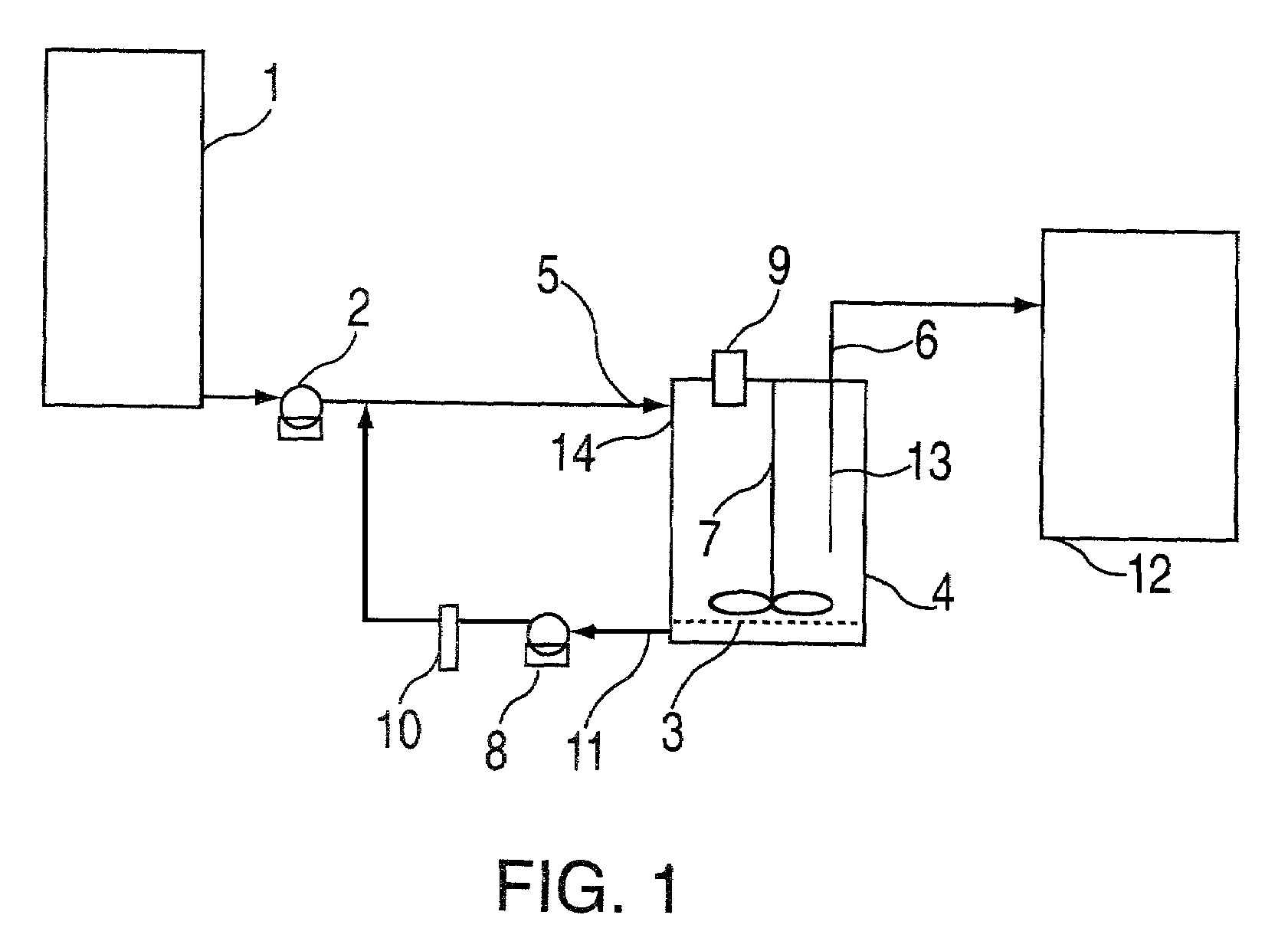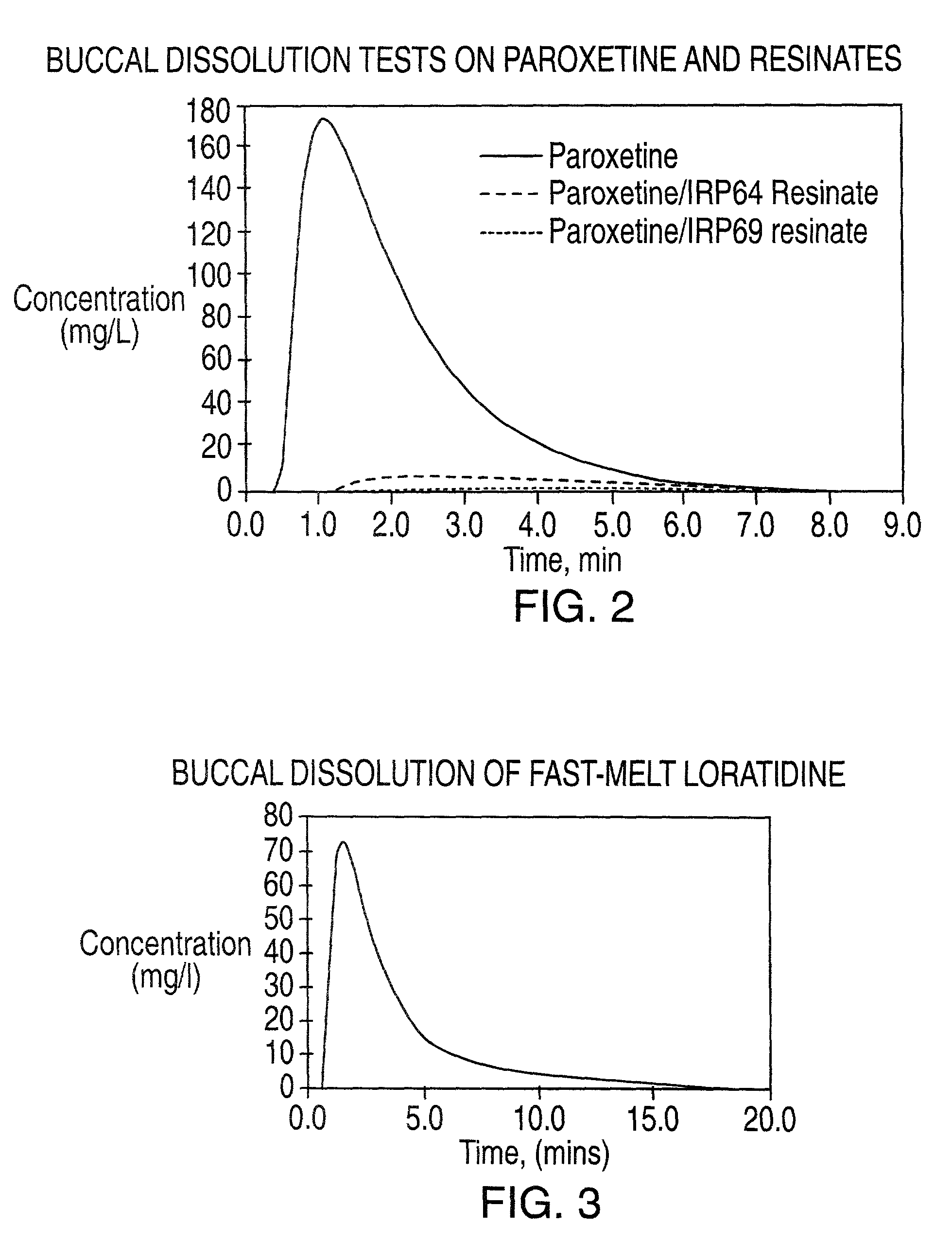Buccal dissolution of active substances
a technology of active substances and sucrose, which is applied in the direction of separation processes, laboratory glassware, instruments, etc., can solve the problems of poor patient compliance, frequent objectionable taste of active substances used in the pharmaceutical industry, and particularly severe problems
- Summary
- Abstract
- Description
- Claims
- Application Information
AI Technical Summary
Problems solved by technology
Method used
Image
Examples
example 1
Preparation of Paroxetine / IRP69 Resinate
[0080]7.5 g of paroxetine HCl hemidydrate was added to 1492 g of deionized water and stirred vigorously for 5 hours. The solution was filtered and the filtrate analyzed for paroxetine by uv spectrometry to be 4.85 g / l expressed as paroxetine HCl hemihydrate. 163.5 g of the solution was then mixed with 5.5 g of a strongly acid ion exchange resin in the sodium form (AMBERLITE® IRP69 available from Rohm and Haas Company, Philadelphia, Pa.) and shaken overnight. The resinate was isolated by filtration and minimal water washing. The amount of paroxetine loaded onto the resin was 72 mg / g based on the wet resinate.
example 2
Preparation of Paroxetine / IRP64 Resinate
[0081]A 5.7 g / l solution of paroxetine was prepared in a manner similar to that in Example 1. 3 g of a weakly acidic ion exchange resin (AMBERLITE® IRP64 available from Rohm and Haas Company, Philadelphia, Pa.) was added to 586 g of the paroxetine solution and shaken overnight. The resinate was isolated by filtration and minimal washing. The amount of paroxetine loaded onto the resin was 10 mg / g based on the wet resinate.
example 3
Release Test on Paroxetine and Paroxetine Resinates
[0082]A buccal dissolution test was run using paroxetine HCl hemihydrate as a 5% solution, and resinate formulations made as in Examples 1 and 2. The amount of active substance in each test was approximately 10 mg. For these examples the effluent from the uv cell was not returned to the filtration cell. The total flow rate of simulated saliva was 3 ml / min, the flow rate through the uv cell was approximately 1 ml / min and the test was run at room temperature. The dissolution profiles are shown in FIG. 2. This example clearly demonstrates the ability of the method to differentiate the taste masking effect of resinates.
PUM
| Property | Measurement | Unit |
|---|---|---|
| internal diameter | aaaaa | aaaaa |
| residence time | aaaaa | aaaaa |
| flow rate | aaaaa | aaaaa |
Abstract
Description
Claims
Application Information
 Login to View More
Login to View More - R&D
- Intellectual Property
- Life Sciences
- Materials
- Tech Scout
- Unparalleled Data Quality
- Higher Quality Content
- 60% Fewer Hallucinations
Browse by: Latest US Patents, China's latest patents, Technical Efficacy Thesaurus, Application Domain, Technology Topic, Popular Technical Reports.
© 2025 PatSnap. All rights reserved.Legal|Privacy policy|Modern Slavery Act Transparency Statement|Sitemap|About US| Contact US: help@patsnap.com



